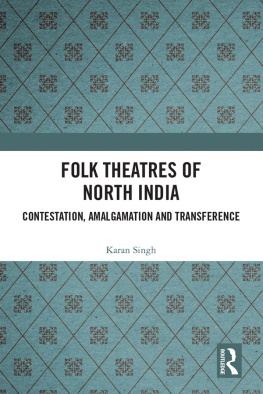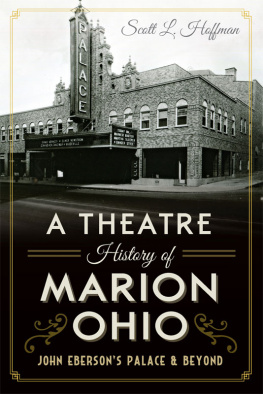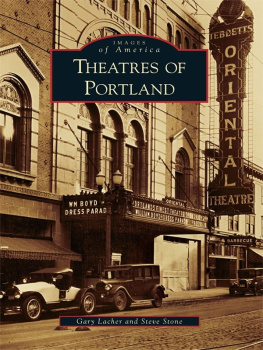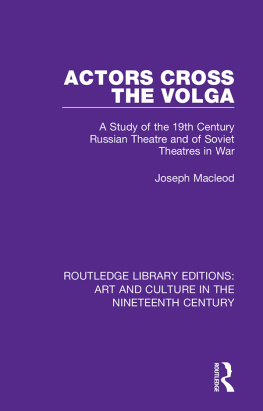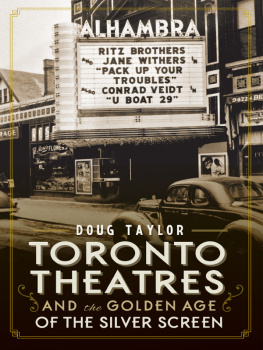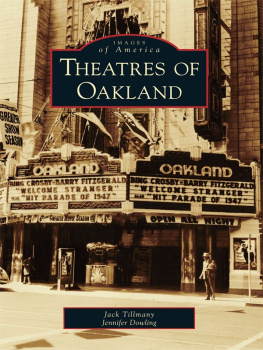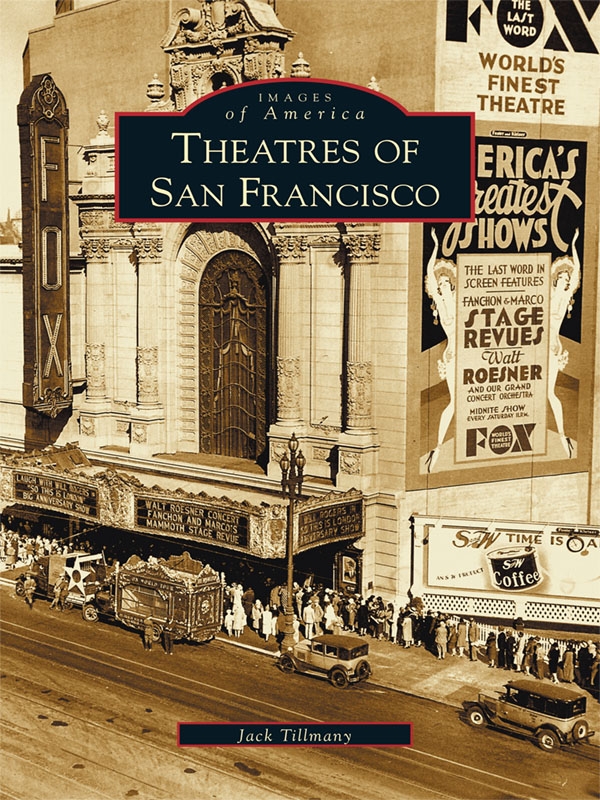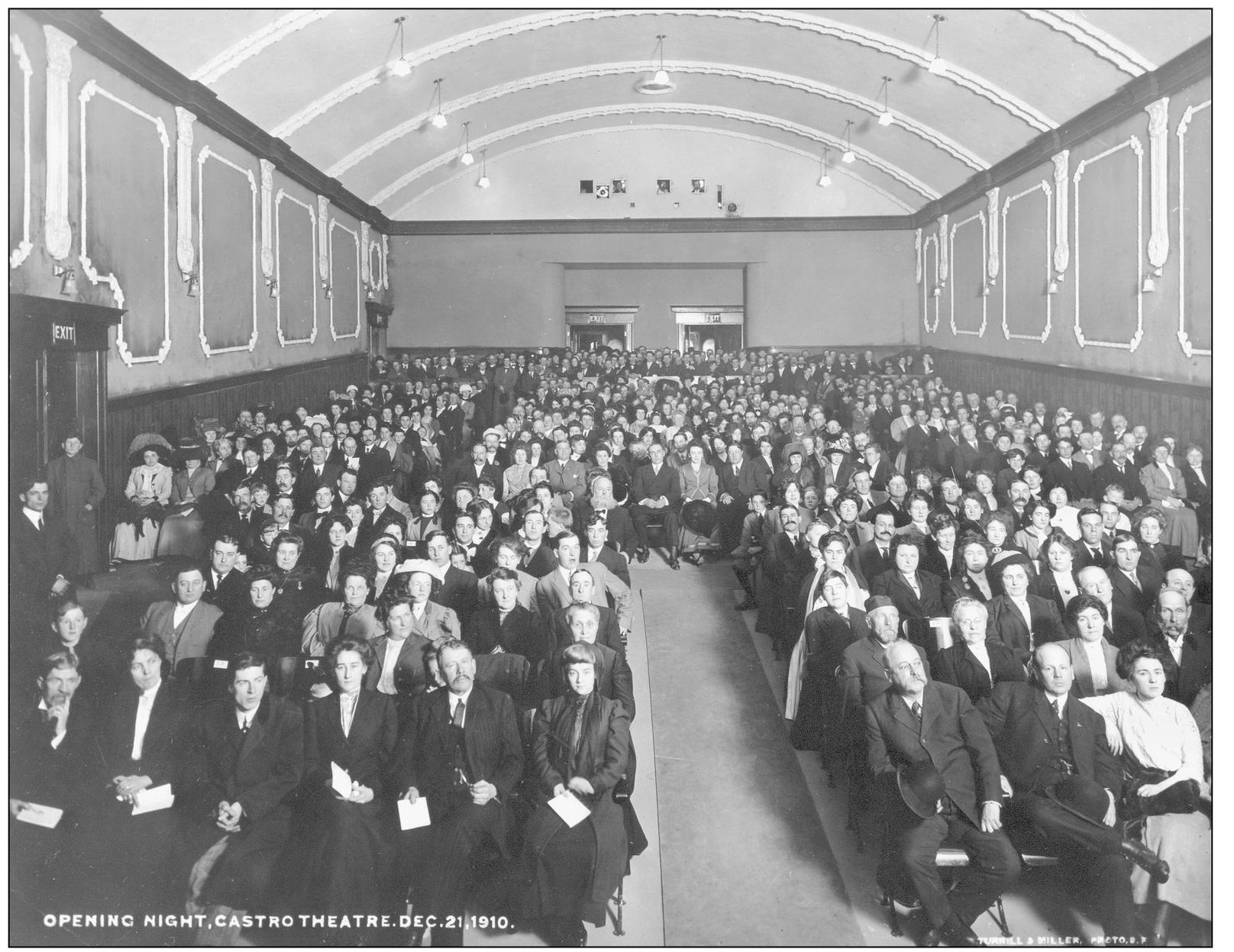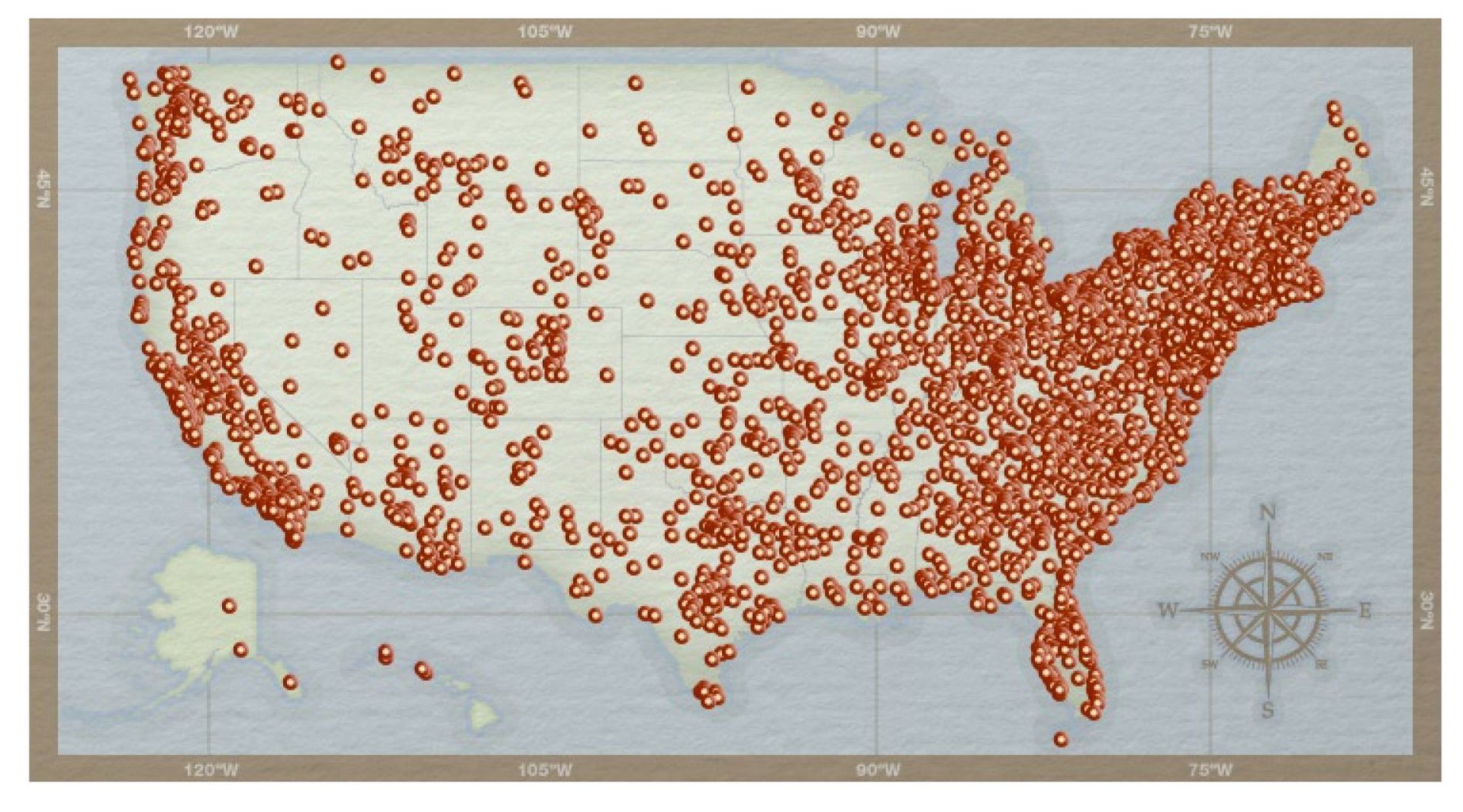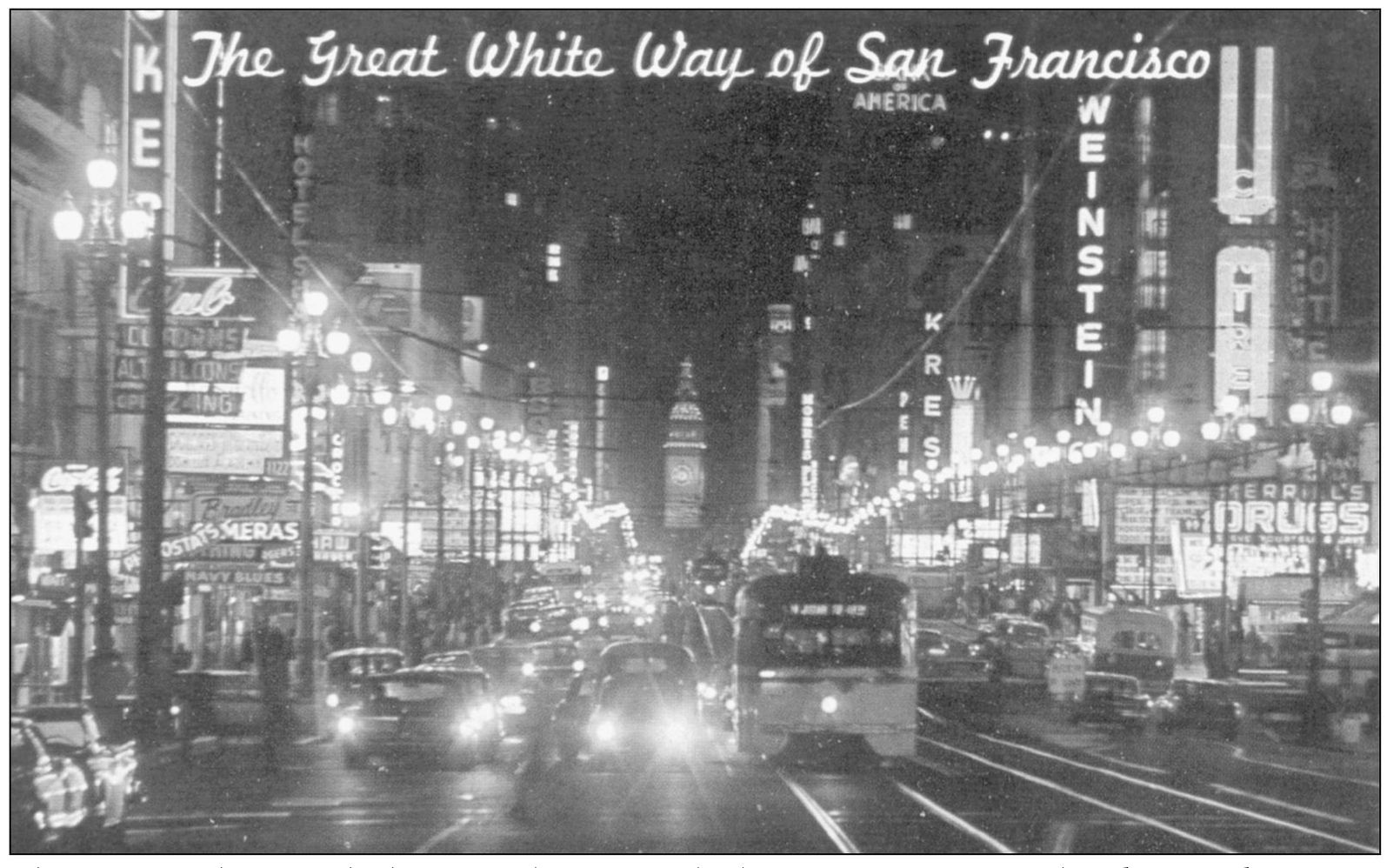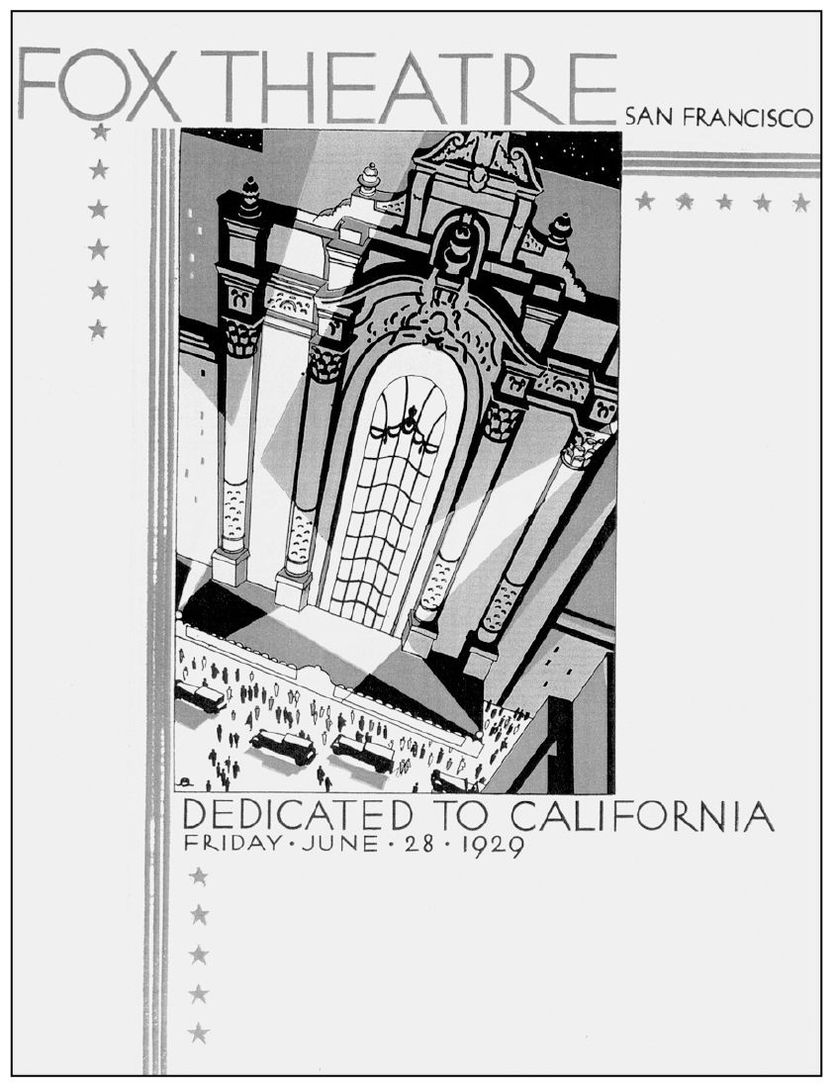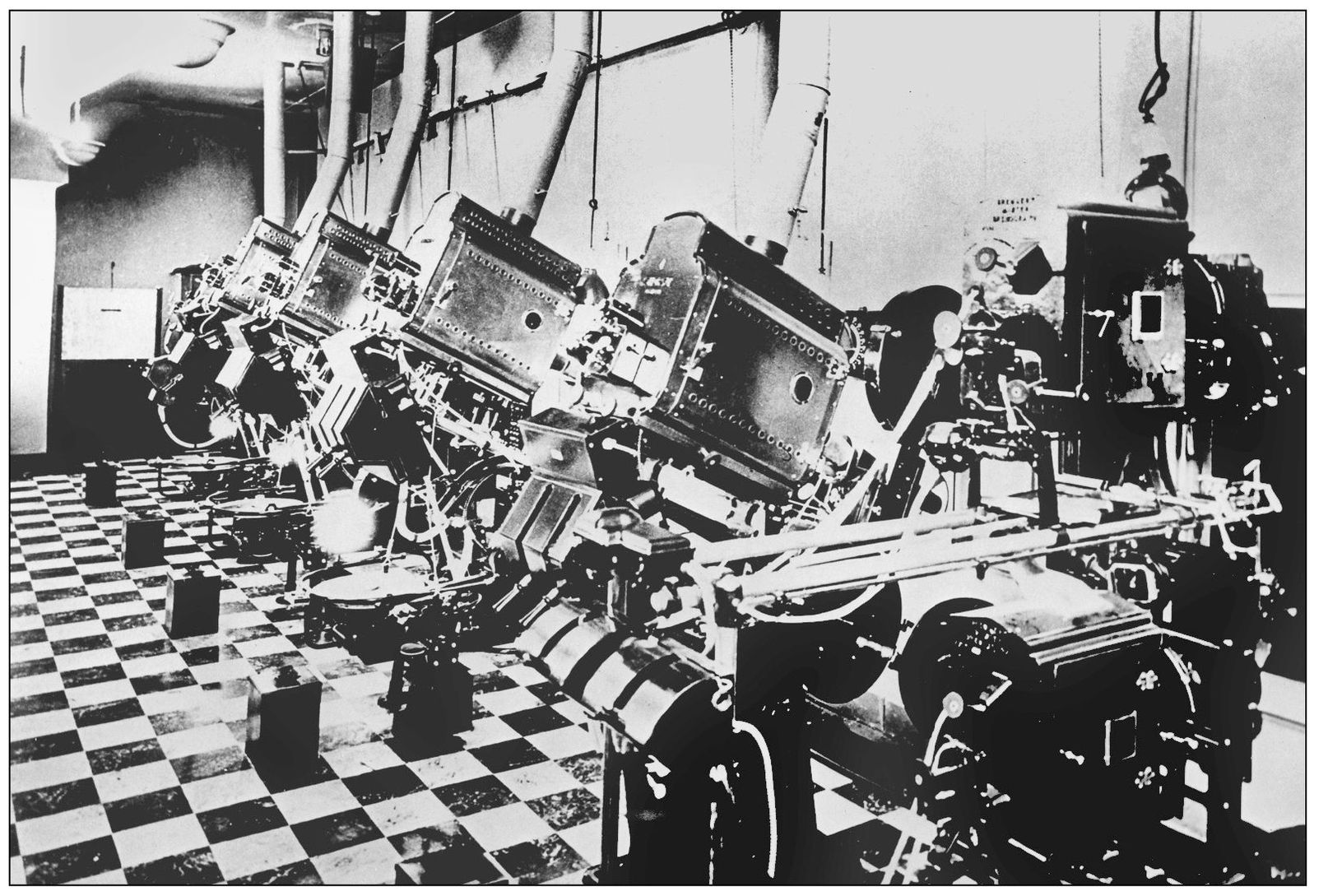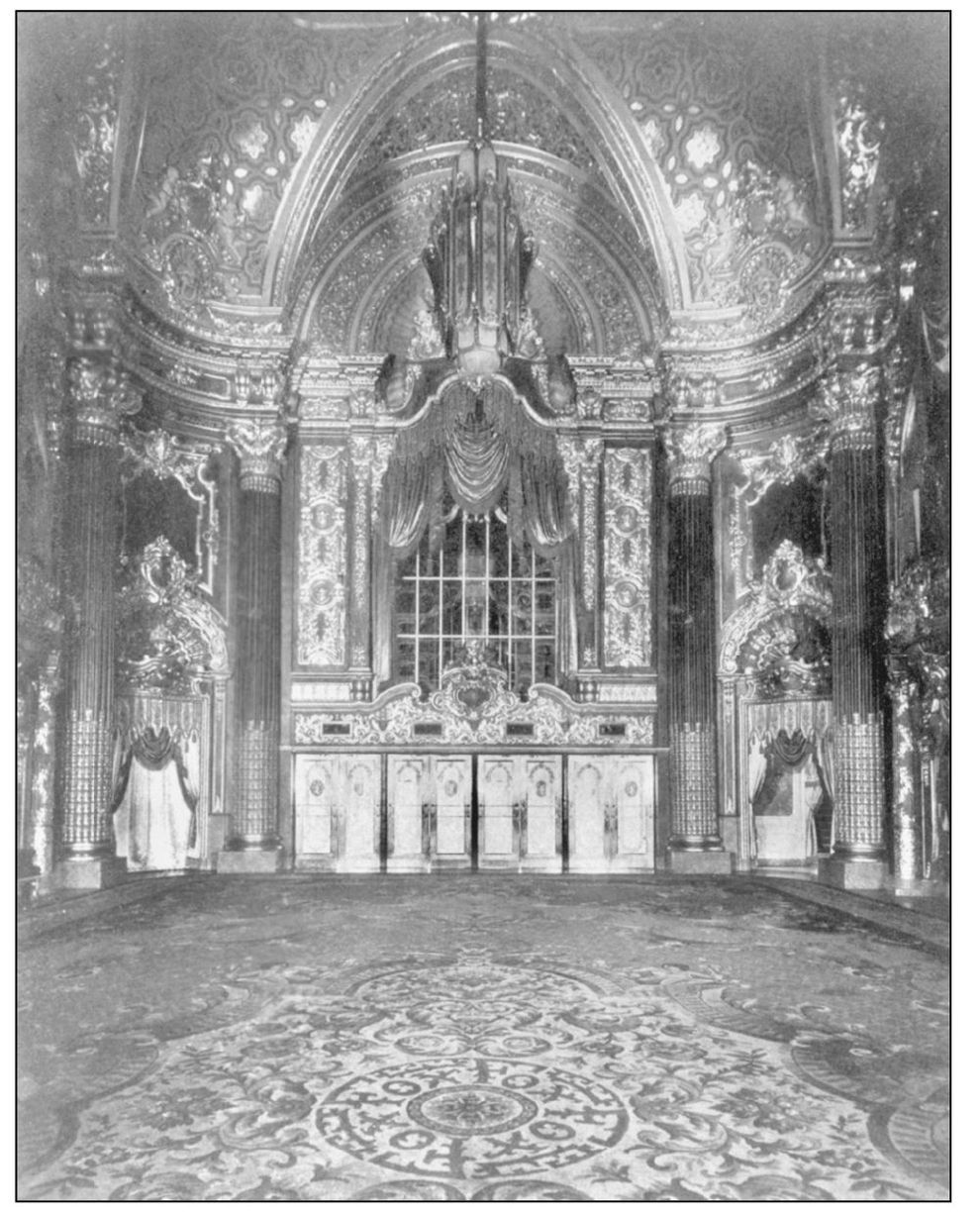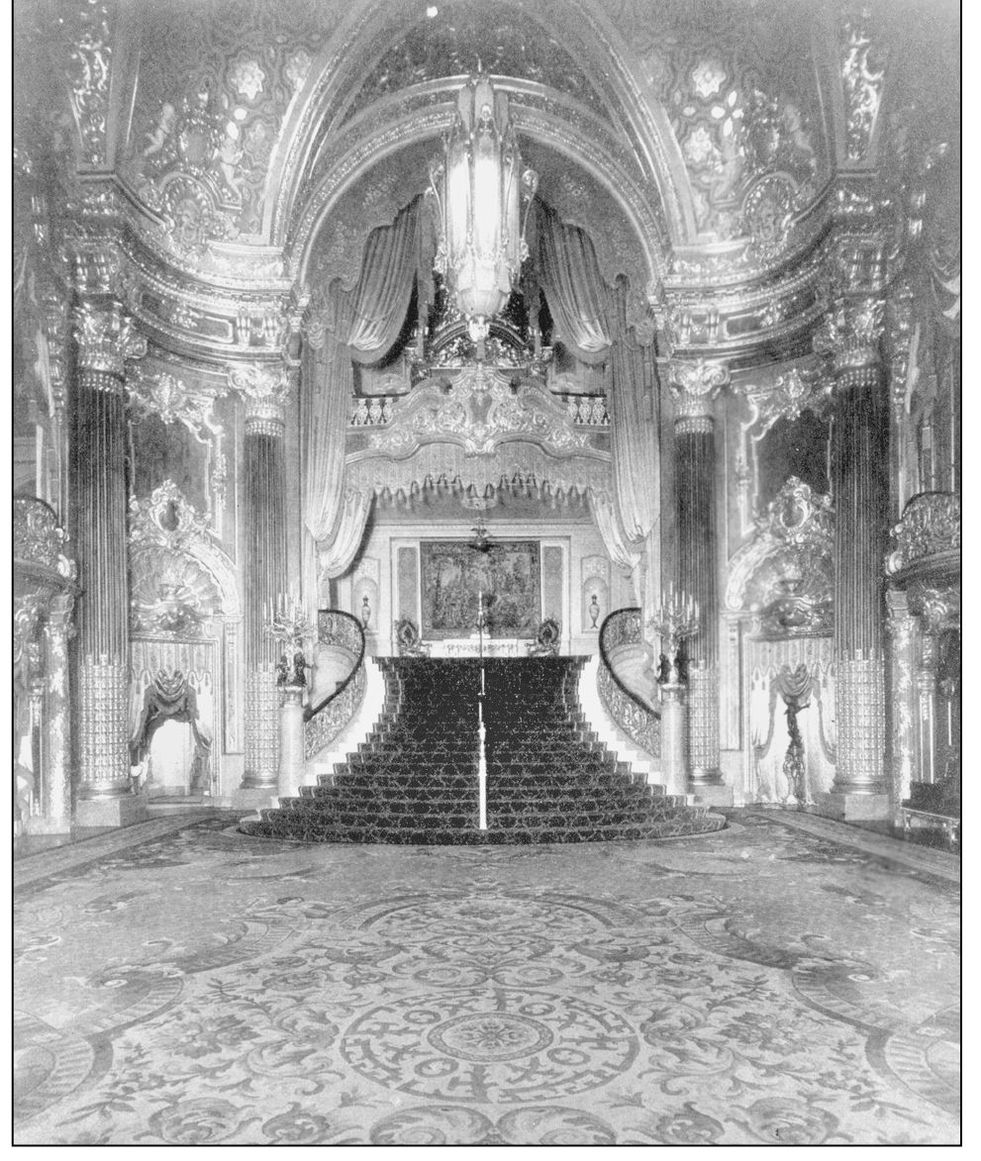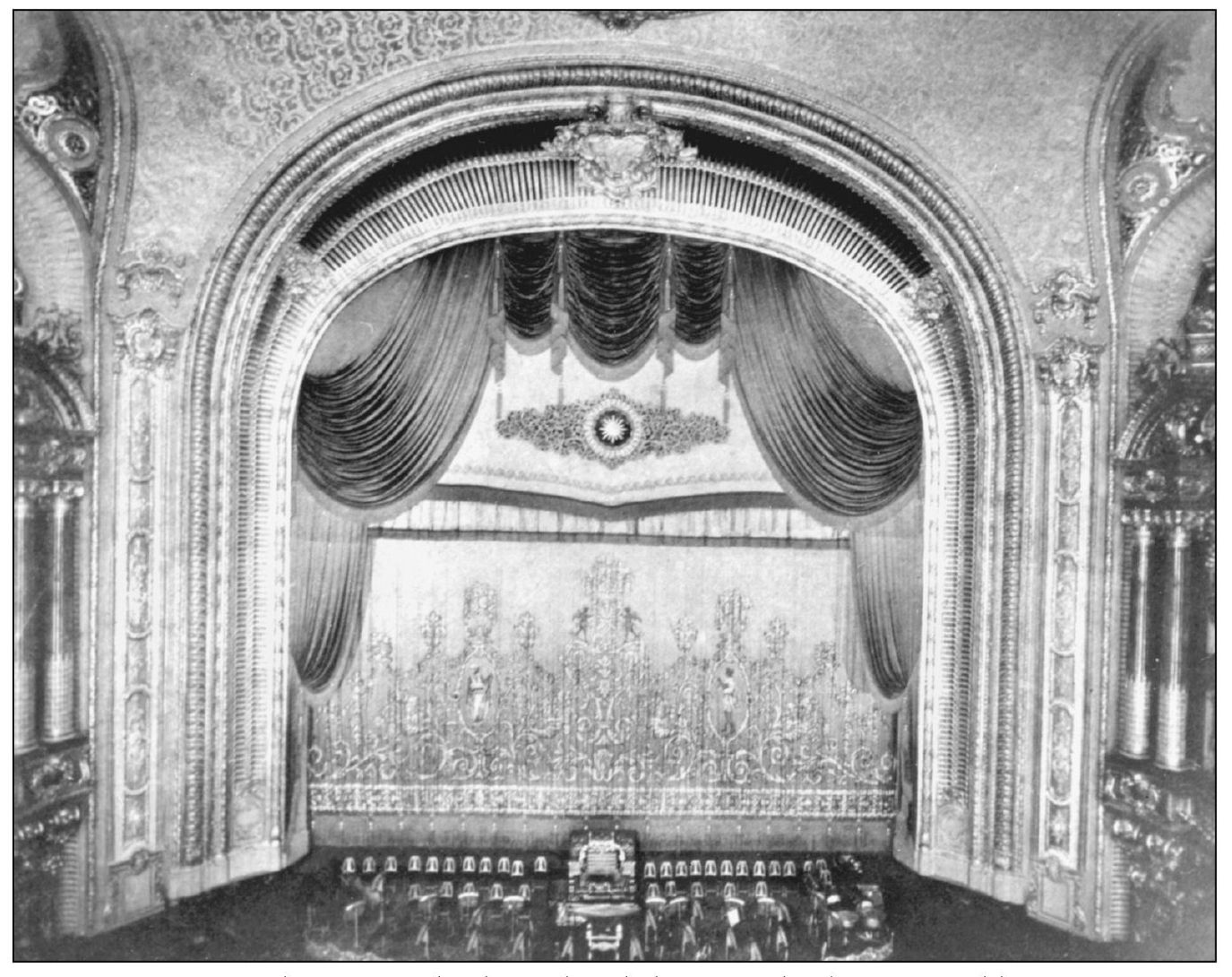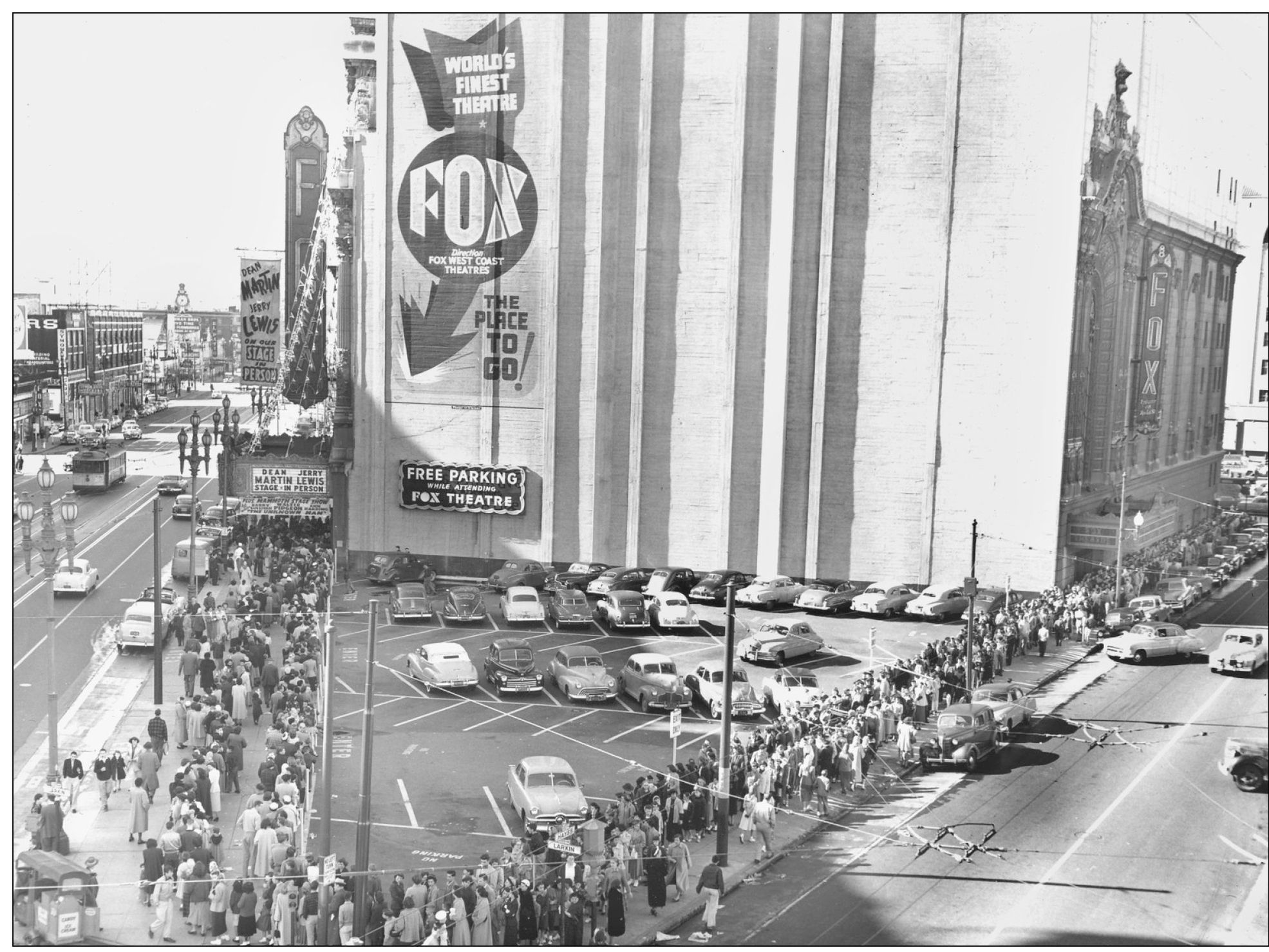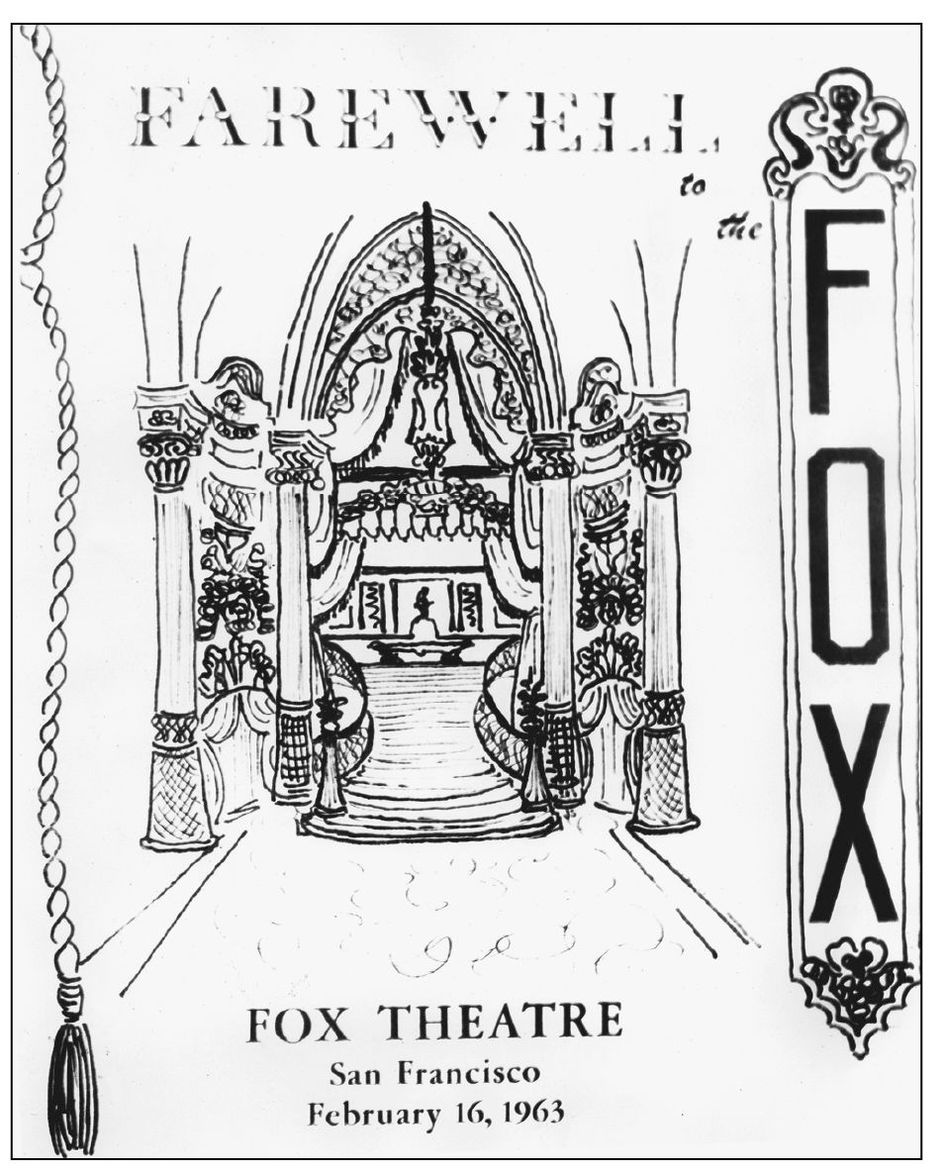One
MARKET STREET
It was called the Great White Way because of the non-stop stream of lights that flooded the street from dusk to midnight, many of them provided by the array of movie theatres that held court for six incredible blocks. For over 50 years, from the mighty 4,650-seat Fox at 1350 Market Street to the humble 300-seat Silver Palace at 727 Market Street, a dozen and a half venues of every size and demeanor beckoned patrons to a grand total of over 25,000 seats, approximately one-quarter of the San Francisco theatre total. Every first-run American-made film opened on Market Street and nowhere else in the city; the neighborhood theatres got them later. But starting in the mid-1950s with Oklahoma! at the Coronet, distribution policies started to change, and big new films started bypassing Market Street and premiering more and more in the outlying areas. Hence, the lights started going out in the 1960s, and for the next 40 years, Market Street got dimmer and dimmer.
Today there are a few survivors. The lights are on again at the Orpheum, Golden Gate, and Warfield, all now upgraded and offering live entertainment, with the benefit of office buildings upstairs to help defray the ever escalating costs of operation. The former United Artists, renamed the Market Street Cinema 30 years ago, offers more exotic forms of live diversion, as do the little Regal (now L.A. Gals), and Biograph, now Crazy Horse Gentlemens Club. Market Street goes on, greeting the new century even as historic streetcars from the previous one still rumble by.
This c . 1966 photograph shows Market Street, looking east from Seventh. The Sound of Music is already in its second year at the United Artists. Department stores like Weinstein, Kress, and Penneys still welcome nighttime shoppers, and a crowded N Judah heads westward, taking people home.
The Fox Theatre opened on June 28, 1929, a $5-million, 4,650-seat movie palace in every sense of the word. Designed by Thomas W. Lamb, it was to be San Franciscos largest, finest, and ultimately, saddest memento of 1920s extravagance. Its untimely end still brings tears to the eyes not only to those old enough to remember it in its heyday, but also to those who know it only by reputation. The Foxs architectural grandeur, thankfully, is preserved in countless photographs. The cover image shows the Fox at the peak of its popularity as it celebrated its first anniversary in the summer of 1930.
Above the top balcony, over 200 feet from the original 29-by-22-foot screen (believed to be the longest projector-to-screen distance in the United States), four projectors and a brenograph (a lighting effects machine) are aimed at a 27-degree angle towards the screen below. Note the Vitaphone turntable attachments, used to accommodate films with sound tracks still being recorded on disk.
The ornate grandeur of the Fox Lobby shows well in this view looking outwards towards Market Street.
The Fox lobby is pictured here from the same point, looking into the theatre and towards the grand staircase. Note the Fox emblem in the carpet.
The Fox proscenium, 64 by 40 feet high, utilized three of the largest and heaviest curtains ever hung in a theatre. The orchestra pit accommodated not only a full orchestra but a Wurlitzer pipe organ as well.
There were 4,650 seats available for Fox patrons. The theatre advertised it was the largest west of the Mississippi, and indeed it was.
In February 1952, Dean Martin and Jerry Lewis appeared in person for a single week at the Fox Theatre. There were five shows a daysix on Saturday and Sundayand the crowds kept coming. An estimated 90,000 tickets were sold, for an all-time San Francisco attendance record yielding a box office gross of $123,000. That might not sound like much, but this was an era when adult tickets were only a little more than a dollar apiece, and children about half that.
After 10 years of continually declining patronage (due in no small part to the incredibly poor quality of the films being presented), the Fox hosted a combination wake and farewell party that drew a capacity crowdthe first in a long, long time. After an evening of cheers and tears, the Fox was laid to rest at the age of 33 years, 7 months.


